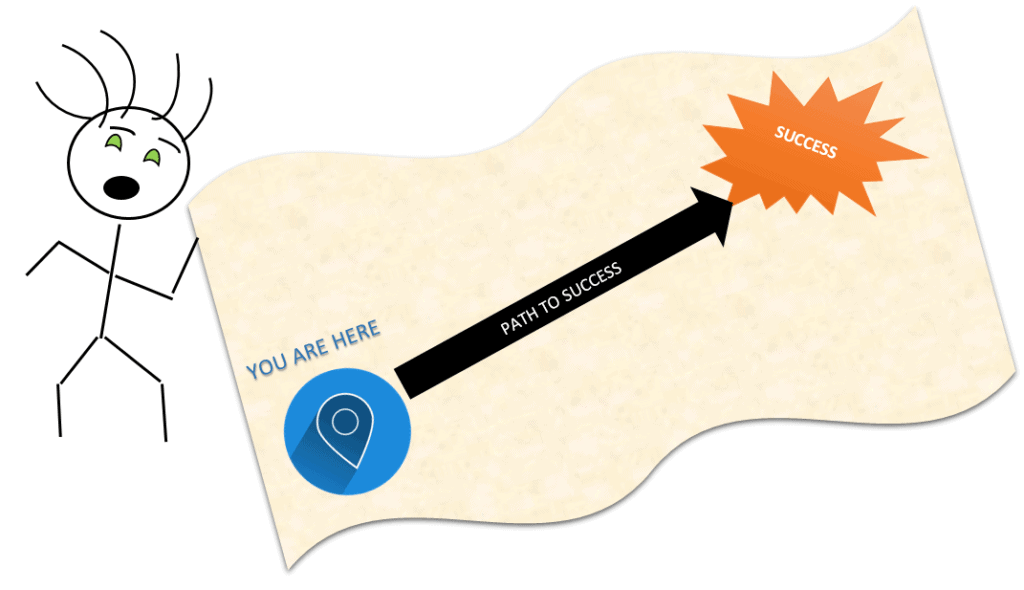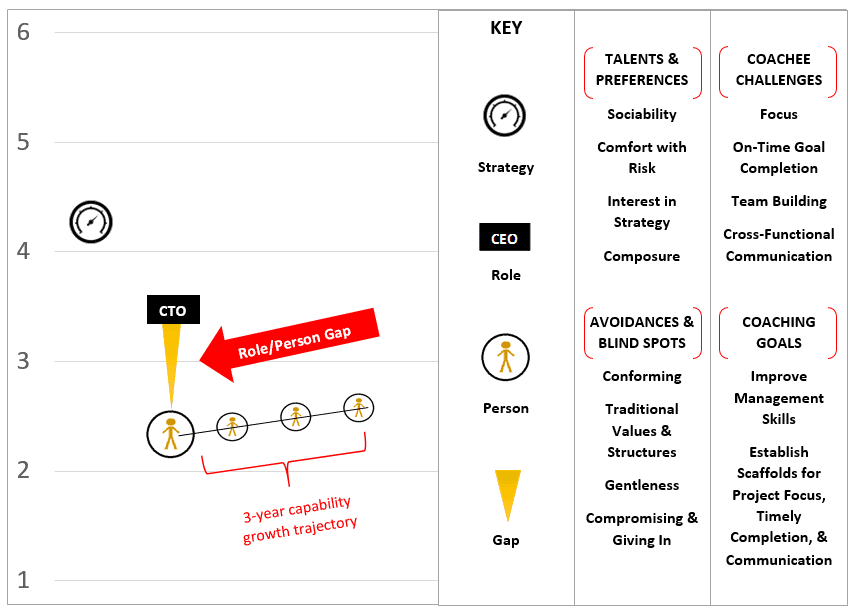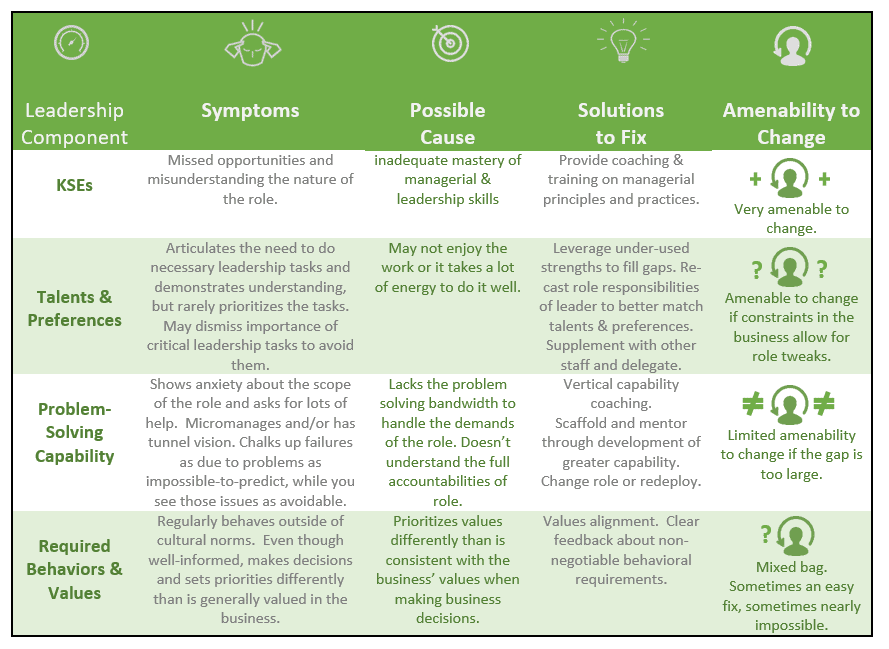CEOs and founders, I’m talking to you. Think about your leadership team. These are people that went through the gauntlet with you through growth, change, and general travails. You’ve committed to them, you’ve invested in them and they’ve committed to and invested in the business. The bonds are deep because you’ve waded across the Rubicon together.
And survived.
And then things change.
Growth happens. The company headcount rises. Your successful market-making product is feeling the pressure of commoditization. You evolve your strategy. The demands on your leadership team change in new and different ways.
This is when some leaders get in over their heads.
People change, people grow, businesses change, businesses grow. What got you here, won’t always get you where you want to go next. This refers to your leaders too. This can even refer to you, as scary as that can be.
The symptoms you see that point to leadership problems.
It can look like poor communication between the different parts of the business. You see your leaders get tunnel vision and miss deadlines. You see frontline turnover that slows the ship down. There is confusion about deliverables and excuses about that impossible-to-anticipate things that caused the whole problem that you saw coming a mile away. Frustrating. Scary.
Leader-under-pressure is a completely normal phenomenon.
If you haven’t experienced this yet as a leader, you likely will. It’s not unusual. If some other leader claims to have never experienced this, they lie (or are incredibly inexperienced).
Leaders of high growth businesses (and high-growth leaders in normally growing businesses) hit roadblocks all the time. It’s an uncomfortable truth that even the bravest leaders have difficulty facing head on. So sometimes these things fester. Left unaddressed, moderately noticeable struggles balloon into full-on crises. And that’s unfortunate. But crises can be overcome.
Imagine a future with your leadership team firing on all cylinders.

Just picture it. Imagine what you could be doing as a business if that were true? Your competitors don’t want that. Do you want that?
But that’s NOT your business because…you have a leader-under-pressure.
Don’t cry. Don’t sweat it. It’s a hard thing to deal with, but it’s solvable. Let me show you how.
Get at the root cause so you solve the problem fast, instead of getting tangled up chasing symptoms.
The point of this post is to help you diagnose why a leader is stumbling so you know what to do about it. To do that, I’m going to point you toward a diagnostic model that works really well. Diagnostic model? That’s fancy talk for a framework for figuring out the root cause of something. If you can figure out the root cause of the problem, you have a fighting chance of fixing it. Otherwise, sadly, you’ll end up chasing symptoms.
A predictive leadership fit model that shows common causes of leadership-under-pressure.
There are four components of person-to-role fit. Knowledge, skills, and experience are the commonly understood component. Talents and preferences refer to our individually specific tendencies that make some types of work more intrinsically rewarding and intuitive than other types of work. Problem-solving capability refers to the raw cognitive bandwidth to consider a particular time horizon in decision-making, be able to construct systems from ground level, and look around corners when confronted with ambiguous situations. Required behaviors are the role-necessary and company-culture-necessary things that must be done by the person in the role.
In the graphic below, examples of each type are listed in each circle.

It’s super-hard to be effective if you don’t have all of these. Some of these components are more trainable—more coachable—than others.
When you can determine which part of the leadership fit model is causing the unfortunate symptoms your leader-under-pressure is showing, you are much, much closer to a solution. Even better, when you know how amenable to change that cause is, you can put together a feasible on-the-ground plan that you can have faith in. It may be hard, but you can have faith in it.
Let’s unpack the leadership fit model.
For each component, the chart below briefly describes what it is, how to recognize it, and what to do about it.
Leaders, do these look familiar? The solutions column should give you a starting point for solving your leader-under-pressure challenges. Next, I unpack the role of coaching in the process. Coaching can be provided with internal or external sources or a hybrid approach.
The role of leadership coaching in diagnosing and solving root cause.
Whether it’s role change or role evolution, you aren’t going to get from here to there if you don’t have a clear, accurate picture of where HERE is. Once you’ve identified root cause, coaching can play a big role in effecting the desired change. It’s not the only thing, but good, focused roadmap coaching is very useful.

A new concept – leadership roadmap coaching.
The field of product development talks a LOT about product roadmaps. The purpose of a product roadmap is to communicate direction and progress to stakeholders. Likewise, a leadership roadmap communicates the direction and progress of the leader across all four components.
Roadmap coaching focuses on determining which of the four components—the four building blocks of great leadership—are the root cause of this particular leader-under-pressure situation. Because of this focus, results and lasting solutions come faster. Yes, this approach can be harder than other more oblique approaches. It’s hard work. Great leadership always is.
Roadmap leadership coaching includes vertical stretch coaching, management principles coaching, talents optimizing, blind spot coverage, and blocker removal. I call it roadmap coaching because coaching follows a custom roadmap that adjusts with progress and changes in role context.
Building a leader dashboard for development.
Below I illustrate an example of a one-page presentation of a leader-under-pressure’ development areas of focus. This document serves as an anchor for all coaching interactions and stretch goals for the leader. I’ve added the red notes to point out certain things for you in the article.
 All four components are addressed on this one-page leader dashboard. Problem-solving capability today and growth trajectory, any gap between role and current capability, talents to leverage, blind spots to address, and observed behaviors that need improvement. KSEs focus only on leadership- and management-specific knowledge and skills, but technical capabilities can also be captured in a one-pager like this.
All four components are addressed on this one-page leader dashboard. Problem-solving capability today and growth trajectory, any gap between role and current capability, talents to leverage, blind spots to address, and observed behaviors that need improvement. KSEs focus only on leadership- and management-specific knowledge and skills, but technical capabilities can also be captured in a one-pager like this.
Ideal time to talk to a coach.
Before you’ve given up hope and as soon as you see the problem not resolving with the normal fixes and, well, a little patience. Or you can be proactive and engage a coach to help keep your team ahead of the curve. But don’t wait until you’ve thrown in the towel. That’s not fair to anybody.
It’s going to happen. At some point, your business will change.
This will cause leadership demands to change. Inevitably, you’ll have someone on your team not keeping up or coloring outside the lines in a way that’s not really helpful. It might even be you. These challenges are normal and come with the territory of growing and evolving a business.
Now you have more tools for leader success.
Apply these well and you don’t just get to imagine the business you could have, you’ll be well on your way to achieving it. Ideally, much of the developmental pressure for your leaders happens internally. But that approach does have limits when you don’t judiciously supplement with external coaching.
Find a solution that works for your business and your leaders. If you know a leader-in-transition or a leader-under-pressure, remember:
Eradicate root cause to solve fast.
Questions? Feel free to call or email me for a free 30 minute consult.


